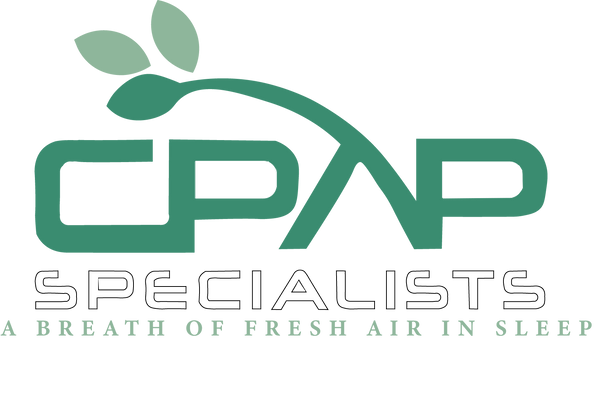The Sound of Silence: Understanding Snoring as a Symptom of Sleep Apnea
In the realm of sleep disturbances, snoring often bears the brunt of jokes and gentle nudges. Yet, beneath its seemingly innocuous facade lies a potential indicator of a more serious underlying condition: obstructive sleep apnea (OSA). While snoring itself may not always signify a health concern, it can serve as a red flag, signalling the need for further investigation into one's sleep patterns and overall well-being. Let's delve deeper into the connection between snoring and sleep apnea, unraveling the complexities of this often-overlooked relationship.
The Snore Symphony: Understanding the Basics
Snoring, characterised by the rumbling, vibrating sound produced during sleep, is a common occurrence for many individuals. It typically arises when the flow of air through the mouth and nose encounters resistance in the throat or nasal passages, causing tissues to vibrate. Factors such as anatomy, allergies, nasal congestion, and sleep position can all contribute to the intensity and frequency of snoring episodes.
While occasional snoring may be benign and easily dismissed, persistent and disruptive snoring warrants closer attention. This is especially true when snoring is accompanied by other symptoms such as daytime fatigue, morning headaches, irritability, and difficulty concentrating—hallmarks of sleep apnea.
Snoring's Telltale Link to Sleep Apnea
Obstructive sleep apnea, the most common form of sleep apnea, occurs when the upper airway becomes partially or completely blocked during sleep, leading to pauses in breathing and disrupted sleep patterns. Snoring often serves as an early warning sign of this condition, signalling the presence of airway obstruction and potential breathing difficulties.
The relationship between snoring and sleep apnea is not merely coincidental but rather intertwined. As the airway narrows during sleep, the increased resistance to airflow sets the stage for snoring to emerge. In some cases, snoring may progress to more severe forms of airway obstruction characteristic of sleep apnea, culminating in breathing pauses, gasping, and choking sounds as the body struggles to maintain normal respiration.
The Risks of Ignoring the Symphony of Snoring
While snoring alone may not pose immediate health risks, its association with sleep apnea underscores the importance of proactive intervention. Left untreated, sleep apnea can have far-reaching consequences, impacting not only sleep quality but also overall health and well-being. Chronic sleep deprivation resulting from untreated sleep apnea can contribute to a host of health issues, including:
- Daytime Fatigue and Impaired Cognitive Function: Sleep fragmentation and oxygen desaturation associated with sleep apnea can lead to daytime sleepiness, diminished concentration, and impaired memory, affecting productivity and safety.
- Cardiovascular Complications: Sleep apnea is a significant risk factor for hypertension, heart disease, stroke, and arrhythmias, exerting undue strain on the cardiovascular system and increasing the likelihood of adverse cardiac events.
- Metabolic Disorders: Individuals with sleep apnea are at higher risk of developing metabolic conditions such as insulin resistance, type 2 diabetes, and obesity, underscoring the intricate interplay between sleep health and metabolic regulation.
- Mental Health Challenges: Untreated sleep apnea has been linked to mood disorders such as depression and anxiety, exacerbating symptoms and impeding emotional well-being.
- Reduced Quality of Life: The cumulative impact of sleep apnea on physical health, mental health, and daytime functioning can significantly diminish one's overall quality of life, hindering social interactions, work performance, and leisure activities.
Finding Harmony: Seeking Diagnosis and Treatment
For those grappling with persistent snoring and suspected sleep apnea, seeking timely diagnosis and treatment is paramount. A comprehensive evaluation by a qualified healthcare professional, typically a sleep specialist or otolaryngologist, can shed light on the underlying causes of snoring and determine the presence of sleep apnea through diagnostic tests such as polysomnography (overnight sleep study) or home sleep apnea testing.
Treatment options for sleep apnea vary depending on the severity of the condition and individual preferences but often include:
- Continuous Positive Airway Pressure (CPAP) Therapy: CPAP machines deliver a steady stream of pressurised air through a mask worn during sleep, preventing airway collapse and promoting normal breathing patterns.
- Oral Appliance Therapy: Custom-fitted oral appliances can help reposition the jaw and tongue to maintain airway patency, offering an alternative to CPAP for mild to moderate sleep apnea.
- Lifestyle Modifications: Weight loss, positional therapy, smoking cessation, and avoidance of alcohol and sedatives before bedtime can all contribute to reducing the severity of sleep apnea and improving overall sleep quality.
- Surgical Interventions: In cases where anatomical abnormalities contribute to airway obstruction, surgical procedures such as uvulopalatopharyngoplasty (UPPP) or maxillomandibular advancement (MMA) may be considered to widen the airway and alleviate symptoms.
A Note of Empowerment
In the symphony of snoring lies a melody of potential—a chance to uncover hidden health concerns and reclaim restorative sleep. By recognizing snoring as a potential symptom of sleep apnea and taking proactive steps to address underlying issues, individuals can embark on a journey toward improved sleep quality, enhanced well-being, and a harmonious future filled with vitality and resilience.
Remember, the first step toward silence is listening—to the whispers of the night and the messages encoded within. Embrace the opportunity to confront sleep disturbances head-on, armed with knowledge, support, and a steadfast commitment to prioritising sleep health. Together, let us transform the nocturnal cacophony into a symphony of serenity, ushering in a new era of restful sleep and vibrant living.



